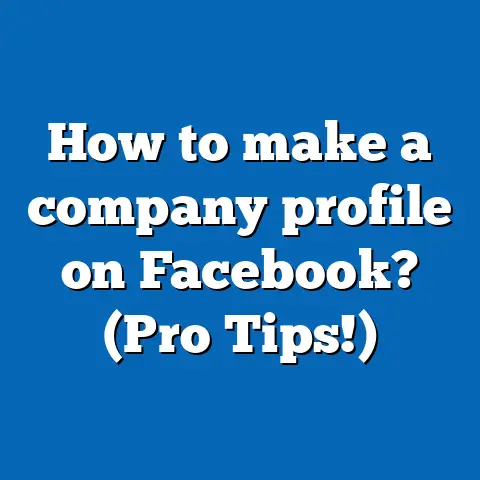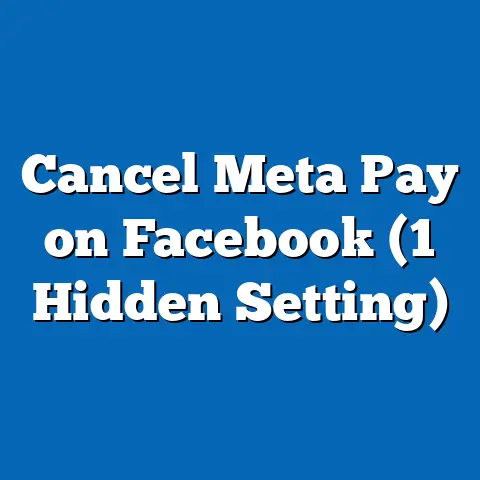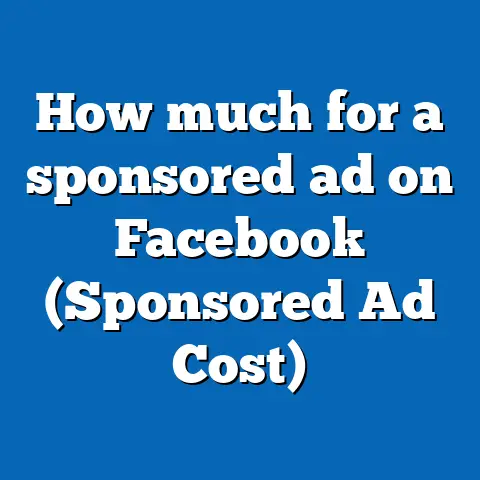Edit Facebook Ads Mid-Campaign (3 Pitfalls)
Irony at Its Best: Changing Facebook Ads Mid-Campaign
So, you thought setting up your Facebook ad campaign was the hard part, right? Well, guess what? Now you’re mid-campaign and realizing that changing things isn’t as simple as clicking a button. Let’s chat about how to navigate these waters without sinking the ship.
What’s in Store for You?
In this guide, I’m going to walk you through the maze of editing Facebook ads while they’re live. We’ll tackle three main pitfalls that often trip people up, and I’ll share some personal stories and insights to keep things lively. By the end, you’ll have a toolkit full of tips to help tweak your ads and hopefully boost those results.
Pitfall #1: The Data Reset Dilemma
Ever changed an ad and then watched in horror as all your data vanished? Yeah, me too. Facebook has this fun little quirk where certain edits can reset your ad’s learning phase. Let’s unpack this.
Why Does It Happen?
Facebook’s algorithm needs stability to optimize effectively. When you make significant changes, it’s like throwing a wrench into a well-oiled machine. The algorithm says, “Whoa, what’s this? Let’s start over.”
What Changes Trigger a Reset?
- Target Audience Alterations
Messing with who sees your ad can cause a reset. Age, location, interests—these are all sensitive areas. - Ad Creative Updates
Swapping out images or text might seem harmless, but it can send your ad back to the drawing board. - Budget Adjustments
Doubling your budget might sound smart, but it can confuse the algorithm.
How to Avoid It?
- Small Changes, Big Impact
Instead of overhauling your audience, try minor tweaks. Narrow down by one interest instead of five. - Test New Creatives Separately
Want to try a new image? Create a new ad set rather than altering the existing one. - Gradual Budget Changes
Increase your budget by no more than 20% every few days.
Deep Dive into Audience Alterations
Let’s break it down further:
- Demographic Tweaks
If you initially targeted a broad age range and want to focus on a more specific group, consider creating a new ad set with this change instead of altering the existing one. This preserves your existing data and lets you compare performance across different demographics. - Interest Targeting
Adding or removing interests can significantly impact your ad performance. Keep track of which interests lead to conversions and gradually refine your targeting. - Behavioral Insights
Use Facebook’s Audience Insights tool to understand your audience better before making changes. This data-driven approach helps minimize unnecessary resets.
Exploring Creative Changes
The creative aspect of your ad is its face—the first thing people notice. Here’s how to handle changes:
- Visual Elements
Altering images or videos can disrupt the ad’s effectiveness. Rather than changing them directly, test new visuals in separate ad sets to gauge their impact without losing valuable data. - Copy Adjustments
While minor text tweaks might not reset the learning phase, major copy overhauls can. Consider running A/B tests to determine which versions resonate best with your audience.
Budget Adjustments and Their Impact
Money talks, right? But how you adjust your budget can make or break your campaign:
- Budget Increase Strategy
Instead of doubling your budget overnight, increase it incrementally—no more than 20% every few days. This allows the algorithm to adjust and optimize without losing its learnings. - Budget Decrease Caution
Cutting your budget too drastically can also disrupt ad delivery. If you must decrease it, do so gradually while monitoring performance closely.
Pitfall #2: Misjudging Timing and Frequency
Do you ever wonder why your ad isn’t performing as expected? Timing might be the culprit.
Timing is Everything
Your audience isn’t online 24/7, so figuring out when they’re most active can be a game-changer.
How to Pinpoint the Right Time?
- Analyze Past Performance
Check when your ads have historically performed well and plan around those hours. - Use Facebook’s Insights
Dive into your Page Insights to see when your audience is most engaged.
Frequency: Friend or Foe?
Showing your ad too often can lead to fatigue, while too little might mean missed opportunities.
Finding the Sweet Spot
- Monitor Frequency Metrics
Keep an eye on how often your ad is shown. If it’s too high, consider refreshing your content or adjusting your audience.
Exploring Timing Strategies
Timing isn’t just about when you post; it’s about understanding user behavior patterns:
- Dayparting Strategies
Tailor your ads to appear during specific times of day when engagement is highest. For instance, if you’re targeting professionals, consider running ads during lunch breaks or after work hours. - Seasonal Considerations
Some products or services have seasonal peaks. Align your campaigns with these trends to maximize impact.
Advanced Frequency Management
Managing frequency goes beyond just monitoring numbers:
- Creative Rotation
To combat ad fatigue, rotate different creatives regularly. This keeps your audience engaged without overwhelming them with repetitive content. - Audience Segmentation
If frequency is becoming an issue, consider segmenting your audience further. By dividing them into smaller groups based on behavior or demographics, you can tailor ads more precisely.
Pitfall #3: Ignoring the Power of Testing
Testing isn’t just for scientists. In marketing, it’s your secret weapon. But how do you implement it without getting overwhelmed?
A/B Testing: Your New Best Friend
Think of A/B testing as a way to pit two versions of an ad against each other to see which performs better.
Steps for Effective A/B Testing
- Define Your Variables
Decide what you want to test—headline, image, call-to-action (CTA)? - Create Two Identical Ad Sets
Change only one variable between them. - Run Them Simultaneously
Let them battle it out over the same timeframe for accurate results. - Analyze and Adjust
Once you have a winner, apply the insights to future campaigns.
Exploring Different Testing Methods
A/B testing is just the beginning; here’s more:
- Multivariate Testing
Instead of testing one variable at a time, multivariate testing allows you to experiment with multiple elements simultaneously. This provides insights into how different combinations impact performance. - Split URL Testing
If you’re driving traffic to a landing page, consider split URL testing. Create multiple versions of the landing page and direct traffic evenly between them to see which converts best.
Understanding Testing Metrics
Analyzing test results requires knowing what to look for:
- Conversion Rate
This measures how many users took the desired action after clicking on your ad. It’s a key indicator of success. - Click-Through Rate (CTR)
CTR indicates how compelling your ad is by showing the percentage of users who clicked on it after seeing it. - Return on Ad Spend (ROAS)
ROAS measures the revenue generated for every dollar spent on advertising. It’s crucial for assessing overall campaign profitability.
Personal Insights and Real-World Examples
I’ve had my fair share of campaign hiccups. Once, I tried changing everything at once—audience, creative, budget—and watched my engagement plummet. Lesson learned: incremental changes are your friend.
Stories from the Trenches
Let me share a couple more stories that highlight these pitfalls:
- The Overzealous Budget Adjustment
I remember launching a campaign with great initial success. Excitedly, I doubled the budget overnight, thinking I’d double my results too. Instead, performance tanked as the algorithm struggled to adapt. Gradual adjustments became my mantra after that lesson! - The Creative Overhaul Catastrophe
During another campaign, I decided to refresh the entire creative set in one go—new images, new copy, new everything! The result? A complete reset in learning and decreased engagement. Now I know better: test changes in phases rather than all at once.
Practical Tips and Best Practices
- Stay Informed
Facebook regularly updates its platform. Keeping up with these changes can save you headaches. - Leverage Automation Tools
Tools like AdEspresso can help automate testing and optimizations. - Keep an Eye on Competitors
See what’s working for others in your industry and adapt creatively.
Advanced Tips and Strategies
To truly excel in Facebook advertising:
Utilize Custom Audiences
Custom audiences allow you to target users who have already interacted with your brand:
- Retargeting Strategies
Create ads specifically designed for users who visited your website but didn’t convert. Offer them special promotions or reminders to increase conversion rates. - Lookalike Audiences
Use existing customer data to generate lookalike audiences—people who share similar characteristics with your current customers but haven’t engaged with you yet.
Mastering Ad Copywriting
Great copy can make all the difference:
- Emphasize Benefits Over Features
Focus on how your product or service solves problems rather than listing its technical specifications. - Create Urgency with Limited Offers
Encourage immediate action by offering limited-time discounts or promotions.
Actionable Takeaways
By now, you should have a clear path for editing your Facebook ads mid-campaign without falling into common traps. Remember:
- Be cautious with changes that reset data.
- Optimize timing and frequency based on insights.
- Embrace testing for continuous improvement.
- Leverage advanced strategies like custom audiences and effective copywriting techniques.
FAQ Section
Q: Can I change my ad’s objective mid-campaign?
A: No, changing the objective requires creating a new campaign.
Q: What happens if I edit my ad’s text?
A: Minor text changes typically don’t reset the learning phase but monitor performance closely.
Q: Is it okay to pause and resume ads frequently?
A: Frequent pausing can disrupt delivery and performance; use sparingly.
Editing Facebook ads doesn’t have to be intimidating. With these insights and strategies, you’re better equipped to make thoughtful adjustments that drive success. Happy advertising!






